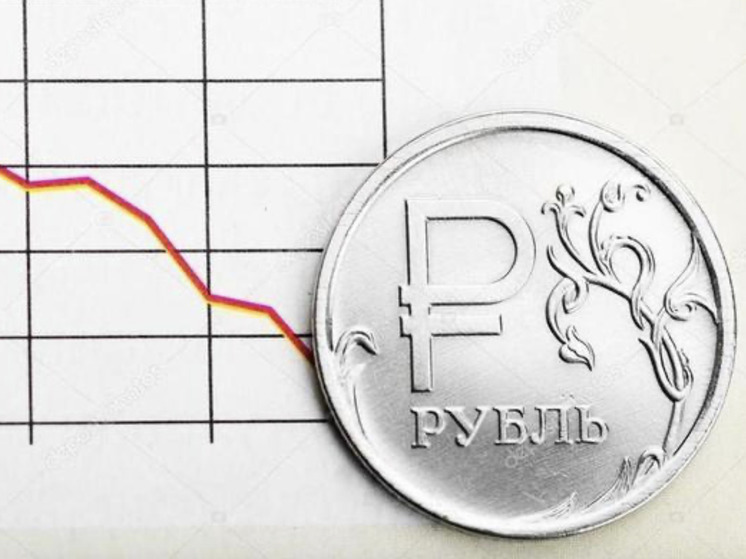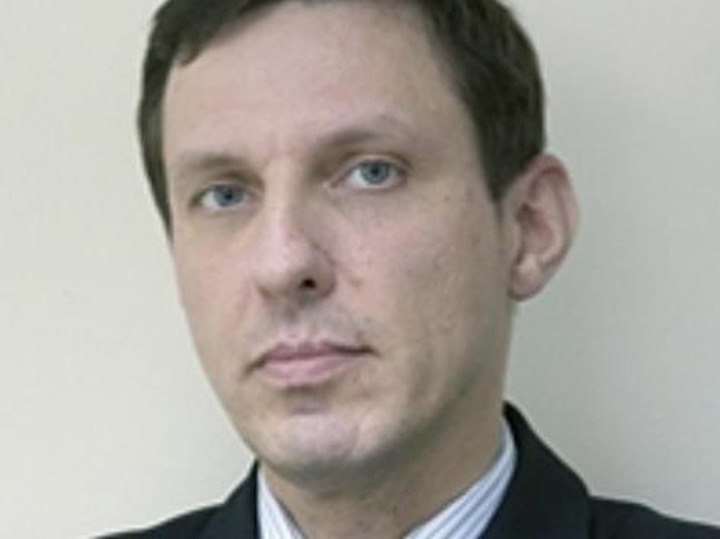Analyst Osadchy assessed the effectiveness of government measures to support the national currency exchange rate
The decision, designed to push the dollar below the psychologically significant level of 100 rubles, was made on Wednesday, October 11. President Vladimir Putin signed a decree on the mandatory sale of foreign currency earnings for some exporters. When a similar measure was introduced in March 2022, the dollar fell in a couple of months from the same 100 to 60 rubles. Whether this scenario will repeat itself in October and how the foreign exchange market will react to the decision made by the president, Maxim Osadchiy, head of the analytical department of BKF Bank, told MK.

— The dollar “fell and squeezed out”: from the closing level of 100.2 rubles per dollar on October 11, the rate rolled back to the area of 97 rubles per dollar, let’s consider this a currency “line of defense.”
 Maxim Osadchy. Photo: cfb.ru
Maxim Osadchy. Photo: cfb.ru
— Without additional “tightening the screws,” the exchange rate will once again (according to my calculations, the fourth) time roll back beyond the “red line” of 100 rubles per dollar: after all, the artificial strengthening of the ruble helps to reduce the price of imports, and therefore, increase imports. And this, in turn, works to weaken the national currency. In addition, the introduction of the mandatory sale of foreign currency earnings increases the costs and risks of exporters, which contributes to a decrease in exports and, again, weakens the ruble.
Exporters were forced to leave a significant portion of their proceeds abroad not because of a lack of patriotism, but because of the problems faced by the Russian banking system due to sanctions: cross-border money transfers for domestic businesses are associated with increased costs and risks due to bans. It is becoming increasingly difficult to transfer money from Russia abroad and back. Since the largest exporters have significant political resources, one should not expect significant changes in their behavior and a sharp increase in the influx of foreign currency into the domestic market. Therefore, it is hardly worth preparing for a rapid strengthening of the ruble.
— They can. Firstly, this is a tightening of the monetary policy of the Central Bank of the Russian Federation, primarily an increase in the key rate. The Bank of Russia can cool the overheated credit market by tightening macroprudential measures (aimed at reducing credit risks — N.T.). Secondly, if we are to put the economy into manual control mode, then we should not limit ourselves to exports. Limiting imports will also help strengthen the ruble. You can start with luxury goods, for example, ban the import of luxury cars and spare parts for them.
— Judging by the formation of a powerful structural liquidity deficit, which reached 6 trillion rubles as of October 13, the largest banks They expect a further increase in the key rate at the next meeting of the Board of Directors of the Central Bank of the Russian Federation on October 27.
— Don't rush to conclusions. The consequences of such restrictions can be quite unexpected. Let us recall, for example, a recent story: due to a sharp increase in government spending, the Ministry of Finance reduces the fuel damper by half, and the dollar rises sharply. Due to restrictions on the price of gasoline on the Russian market, it becomes more profitable for gasoline producers to export it; accordingly, there is a shortage of gasoline in the domestic market and gas stations are closed. Then restrictions are introduced on the export of gasoline, which immediately overflows storage facilities, forcing factories to sharply reduce gasoline production. As a result, the damper was restored on October 1, but at what cost?
Let me remind you that the sacred level of 100 rubles per dollar was broken for the first time in March 2022 due to a sharp drop in exports. The second time — in mid-August 2023. Last week they struck a hundred for the third time: “This has never happened, and here it is again,” as the unforgettable Chernomyrdin said.
— Let's try to figure out why the ruble, before the last presidential decree, was tumbling and falling like a defective Vanka-Vstanka. The main reason for the devaluation in the last six months is a decrease in exports and an increase in imports. A scissors effect occurs; as a result, the inflow of currency into the Russian economy weakens, and the outflow increases. The influx of currency is weakening due to sanctions — primarily due to the refusal of unfriendly countries to buy Russian hydrocarbons, as well as due to the introduced price ceiling for Russian oil at $60 per barrel.
< p>— The oil market reacted relatively weakly to this conflict, since it did not affect the infrastructure important for this market. Neither Israel nor Palestine are any significant players in the oil market. There was nothing comparable to the dramatic increase in oil prices due to the Arab-Israeli war of 1973.
The ruble, due to the sanctions ceiling of $60 per barrel, reacts much more weakly to changes in world oil prices than before the CBO.
— The outflow of currency is increasing due to the fact that imports continue to grow. New supply chains are being formed to replace those lost due to sanctions. We buy lower quality imports, but more expensive ones.
Imports have recovered to pre-WWE levels. However, instead of first-class goods, we receive goods, relatively speaking, of third class, but often at first-class prices. Or we get the same goods, but much more expensive. Instead of Mercedes, Audi and Volkswagen, we buy Chinese Hawalas and Cherries. Even Iranian-made cars are appearing, which before the sanctions would not have had the slightest chance of entering the Russian market.
Let's see how the “scissors” of foreign trade work. Exports in the second quarter of 2023 fell by $48 billion, almost a third, compared with exports in the second quarter of last year. Imports, on the contrary, increased by more than a third — by $19 billion. Accordingly, the difference between exports and imports decreased more than three times: from $95 billion to $27 billion. The demand for currency from importers is growing, and its supply is falling, which is leads to a weakening of the ruble.
— Yes, the second reason for the devaluation is a huge budget deficit, financed, among other things, by emissions. The federal budget deficit for 9 months of 2023 amounted to 1.7 trillion rubles. The “printing press” was red-hot: as of September 1, the monetary base increased over the year by 30% or 6 trillion rubles. Money emission entails an increase in the money supply, which spins the inflation flywheel and contributes to the weakening of the ruble.
The third factor in the devaluation of the ruble is the growth of social payments on the eve of the presidential elections in March 2024.
—Hardly. The main task of the Central Bank of the Russian Federation is to reduce inflation. The regulator pursues an inflation targeting policy. Of course, the devaluation of the ruble contributes to inflation, but the pass-through effect is quite weak: an increase in the dollar exchange rate by 10 rubles leads to an increase in inflation by half a percentage point.
— The Central Bank is criticized, firstly, for the high key rate and, secondly, for the collapsed devaluation of the ruble. Meanwhile, an increase in the key rate contributes to the strengthening of the ruble. It was thanks to the sharp increase in the key rate on August 15 — from 8.5% to 12% — that the regulator managed to stop the collapse of the ruble and even temporarily reverse the trend.
— As sanctions tighten, dependence Russia's dependence on toxic currencies is weakening, but its dependence on “friendly” currencies, primarily the yuan, is increasing. The trouble is that the yuan is a “third-class” currency; it is not even a freely convertible currency. Finance Minister Anton Siluanov expressed a useful idea about the attitude towards the decrease in the purchasing power of the ruble on September 28 at the Moscow Financial Forum. He stated that “if you don’t buy, then the prices are normal.”
— In the context of a geopolitical conflict and a sharp increase in government spending, a weakening of the national currency is inevitable. With various “bells and whistles”—tightening regulation and monetary policy—this process can be weakened, but it is impossible to reverse it.


